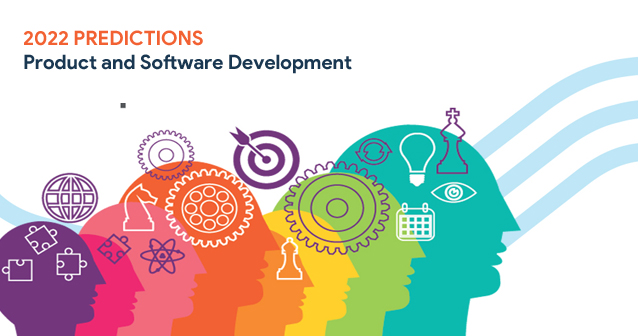After the tragic, pandemic-hit 2020, 2021 was the year of resiliency and fight-back for humanity. Because ofhigh-techinnovations, countries were able to vaccinate people all together. For the IT industry &Software Development, 2021 was animportant year as anticipated.
For the Software Development industry, the present digitalization trends will continue with a lot of changes, innovations, and new uses of present technologies. To predict the future is a challenging task. Here are the most important trends of Software Development trends in 2022.
1. Centralized Infrastructure: Cloud-First is the new normal – The public Cloud will continue to substitute the regional Data Center. In the upcoming years, the public Cloud will be the go-to Infrastructure for Enterprises, Startups &Government. The public Cloud is now the source of digital invention, and the trend would continue in 2022. Public Cloud is playing an important role in democratizing Security, Blockchain as well as bringing several innovations in a reachable way to the customer.
2. Decentralized Infrastructure: Cloud on the Edge – Unlike the public Cloud where we need to have the storage, compute power& AI/ML in a central place (Availability Zone, Region); Edge computing gets the storage, compute power and AI/ML near the client. With the upswing of 5G, Web 3.0, and other high-tech innovations, edge computing would continue to see widespread acceptance in 2022 and beyond. Moreover, retailers will accept edge computing hugely in the coming years.
3. Cyber Security: Cyber Security is just like “Elephant in the Room” for startups or the mid-size companies. They can see the necessity for Cyber Security however cannot implement it correctly because of a lack of resources. Only big enterprises can afford a specialized safety team. One of the most important benefits of the public cloud sellers is that they have democratized Cyber Security. Nowadays, leveraging the Public Cloud services, Startups & mid-size companies can implement highly secure apps without too much effort.
4. Blockchain: Blockchain (Distributed Ledger) is amongst the most disruptive skill in the 21st Century. Cryptocurrency is its most recognized use case, however Blockchain is a lot more than just Cryptocurrency. It can change several fields of our industry as well as affect our daily lives.
5. Machine Learning: Machine Learning (ML) is one more disruptive technology with great success and acceptance in current years. Though, according to its demand, there is a huge shortage of Machine Learning specialists. Also, several companies want to adopt machine learning in a restricted way without hiring a full-time, overpriced machine learning professional.
6. Real-Time Streaming: In Real-Time streaming, Apache Flink is the market leader without any question. It even supports Apache Beam API and provides vendor-neutral solutions to manage real-time streaming data.
7. Rapid Application Development: The Low Code/No Code (LCNC) initiative meant to lower the barrier to develop Web/Mobile apps without a developer (or less number of developers). We still need developers to create applications in years to come. However there are also several cases where Low Code/No Code frameworks/tools can considerably expedite the Application development.
8. Programming (mainstream): Python leads the way – In recent years, there has been a fast rise of Python as a common-purpose programming language. Python took the lead and is the number one programming language now.
9. Programming (enterprise): Java hits back – For the longest time, Java was undeniably the number one programming language. It is moderately complex, interpreted, garbage-collected, multi-threaded, and a powerful programming language. Furthermore, JVM is battle-tested, dominant, mature, and the best Process Virtual Machines in the business. Java was perfect for large enterprise applications.
10. Client-Side Web Frameworks: React & Angular for enterprises – In current Web app development, JavaScript/TypeScript based frameworks directs/rules and the trend will continue in 2022. There are several JavaScript/TypeScript based web frameworks, however two frameworks stand out from rest. One is React from Facebook and the other is Angular (Angular 2+) from Google.
11. Server-Side Frameworks (Java): Spring MVC/Spring Boot is the foremost Server-Side framework in Java.
